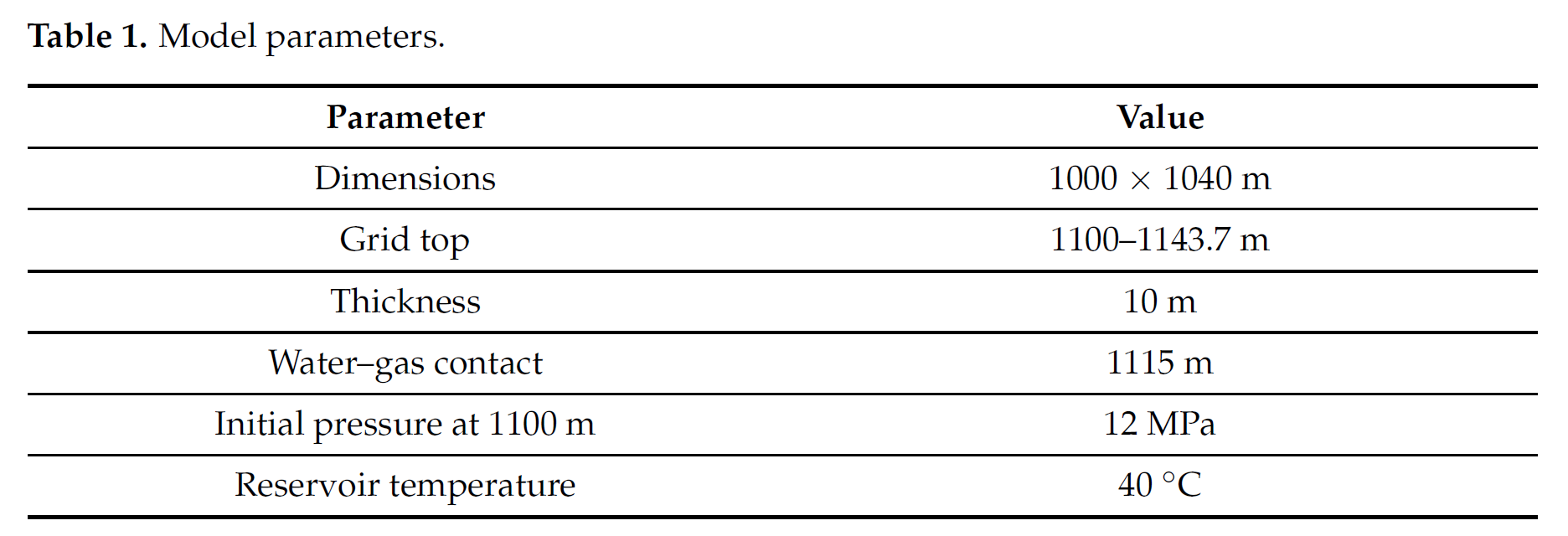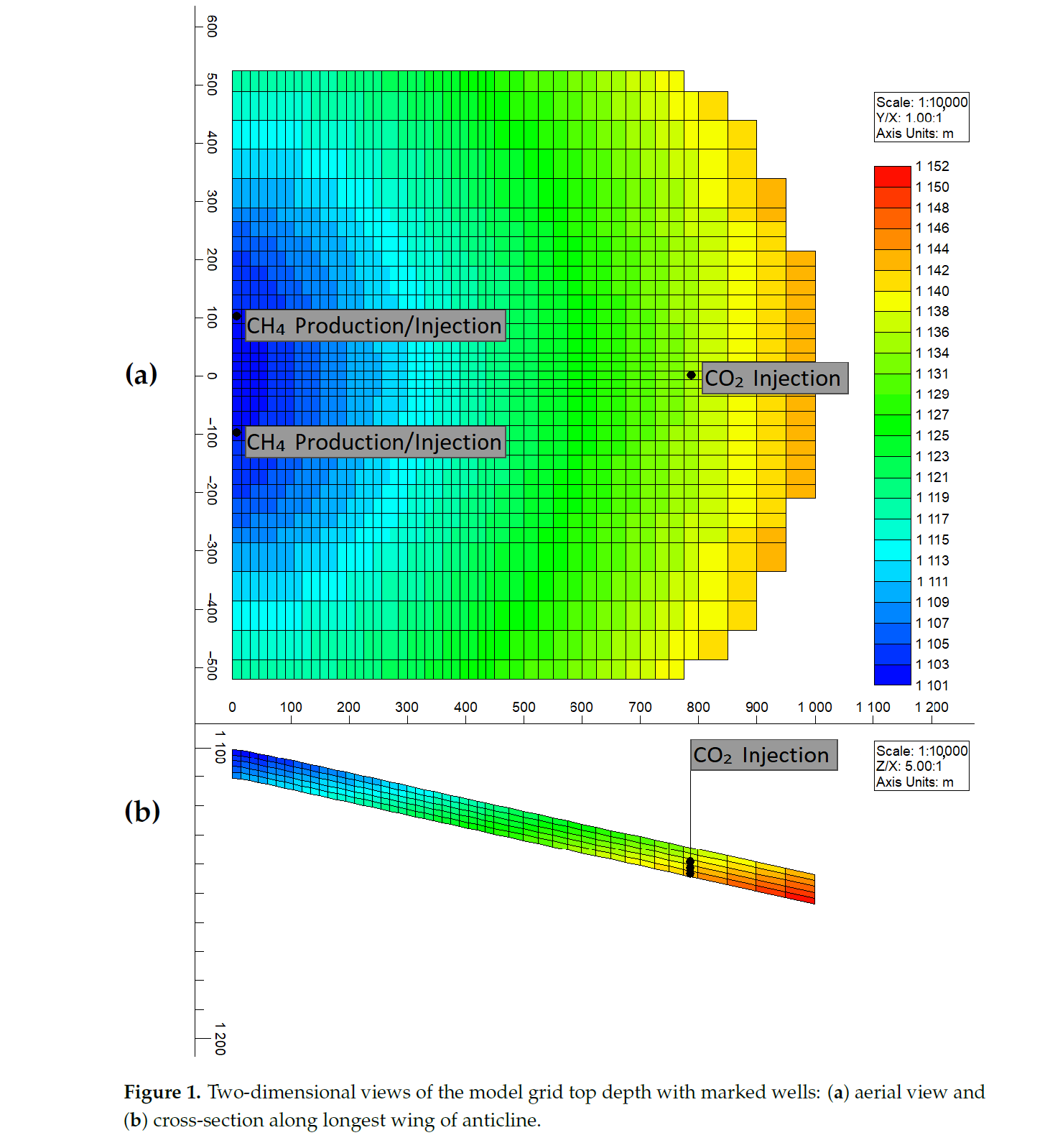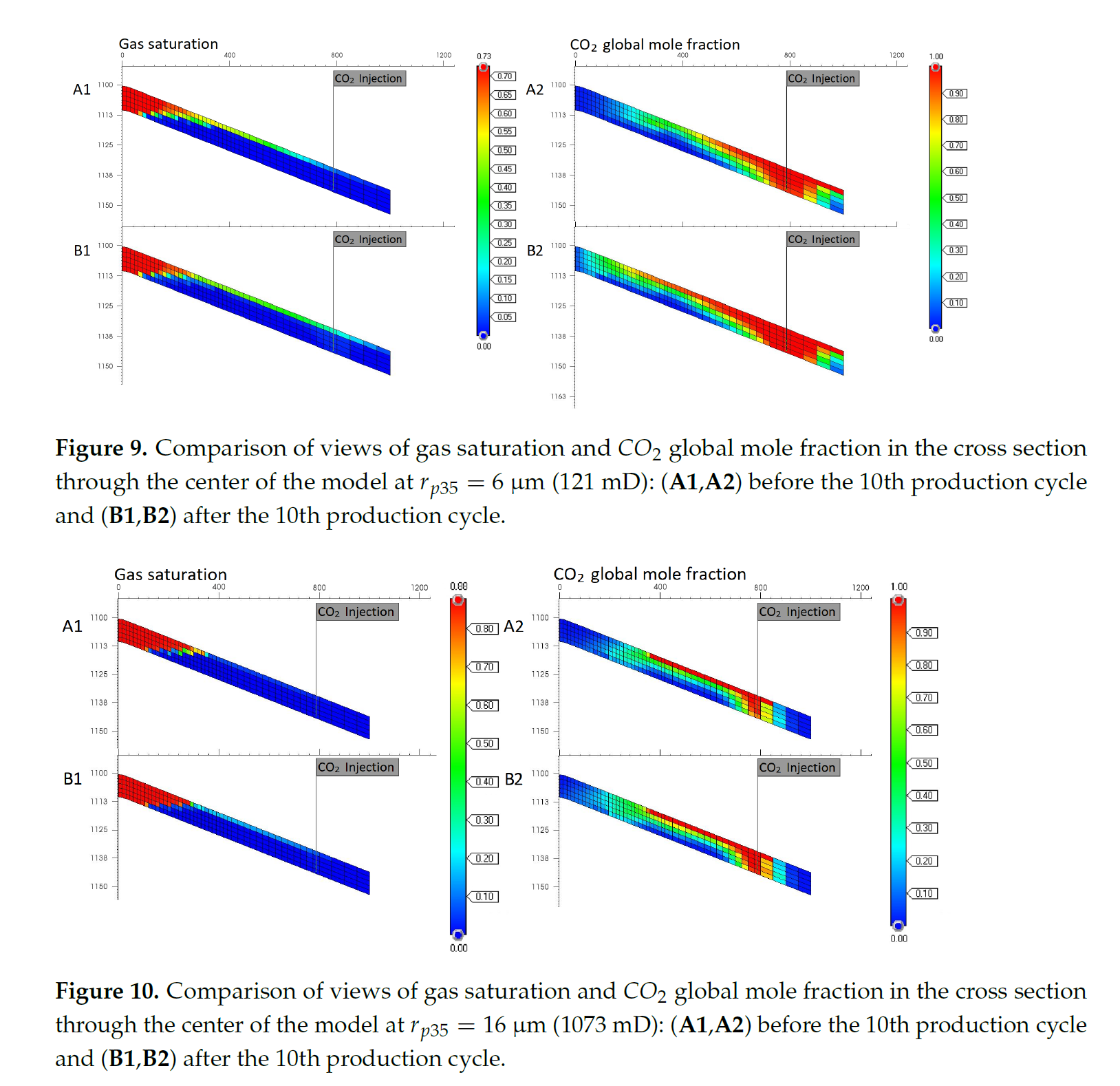Numerical Simulation Study on Underground Gas Storage with Cushion Gas Partially Replaced with Carbon Dioxide
波兰克拉科夫AGH科技大学 AGH University of Science and Technology
- 由于气候变化的影响,碳捕集、利用和封存(CCUS)问题备受关注。其中,将二氧化碳作为地下储气库(UGS)中的垫气是CCUS方法之一。通常情况下,高渗透构造更适合用于储气目的,因为高渗透率可以确保储层内的良好流动和井底压力的维持。然而,在CO2与储层天然气混合的情况下,高渗透率可能会导致CO2向近井区运移加速。因此,分析渗透率对抽采气中CO2含量以及UGS整体性能的影响至关重要。
- 本研究采用化学组分数值模拟器评渗透率和孔隙结构对地下储气的影响。模拟包括储层的枯竭以及10个UGS运行周期。研究结果表明,构造(即渗透性)对储层内CO2的运移、混合区域以及抽采气中CO2含量有显著影响。
- 关键词:CCUS;碳捕集、利用和封存;以二氧化碳作为缓冲气体的地下气体储存。
Abstract
Carbon dioxide capture, use, and storage (CCUS) issues are currently gaining more attention due to climate change. One of the CCUS methods may be the use of CO2 as cushion gas in underground gas storage (UGS). Typically, high-permeability structures are preferable for gas storage purposes. High permeability ensures good flow in reservoirs and well bottom-hole pressure maintenance. However, in the case of the use of CO2as a part of the cushion gas, it mixes with natural gas within the reservoir pore space, and high permeability, with the resulting “ease of flow”, can accelerate the migration of CO2 to the near-well zone. For this reason, the analysis of the effect of permeability on CO2 content in withdrawal gas and the overall performance of UGS seems to be of high importance. In this study, we used a compositional numerical simulator to evaluate the effects of not only permeability but also pore structure on gas storage of this type. The simulations covered depletion of the reservoir and 10 cycles of UGS operation. Our results show that the structure (and thus permeability) has a great influence on the migration of CO2 within a reservoir, the mixing zone, and CO2 content in withdrawal gas.
Keywords:
CCUS; carbon capture, utilization, and storage; underground gas storage with carbon dioxide as cushion gas






5. Conclusions
The thermophysical properties of CO2 make it interesting to consider its potential use as cushion gas for underground natural gas storage. In our study, we focused on the effects resulting from the properties of reservoir rocks. The range of absolute permeability, as well as the corresponding connate water saturation and relative permeability curves, was determined for a porous medium described with radius rp35. Therefore, not only the effect of permeability itself but also, more generally, the effect of the pore structure was investigated.
Our results show that the pore structure and thus permeability of reservoir rocks significantly influence the behavior of a storage facility:
• CO2 content in withdrawal gas and thus the cumulative production of previously injected CO2 were higher in models with larger pores (higher permeability).
• The bigger the pore throat aperture was, the earlier CO2 broke through to the production wells, and the higher the maximum CO2 mole fraction in the well stream was.
• CO2 content in withdrawal gas increased from cycle to cycle, and after reaching some maximum value (higher maximum value with higher permeability), it tended to slightly decrease; only the two models with the lowest permeability did not reach that
point.
• More CO2 dissolved in models with smaller pore throat aperture. • Greater CO2 withdrawal in models with larger pore throat aperture caused changes in the compressibility of the system, which resulted in an increase in the maximum average reservoir pressure.
• Higher permeability allowed bottom-hole pressure to be better maintained.
• The mixing zone was more compact with lower permeability values and spread out in models with higher permeability values.
